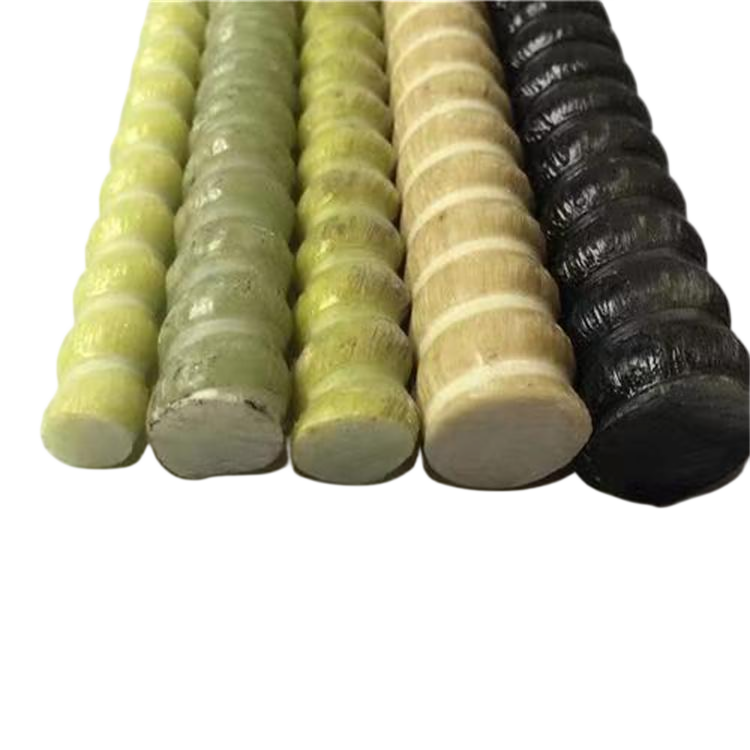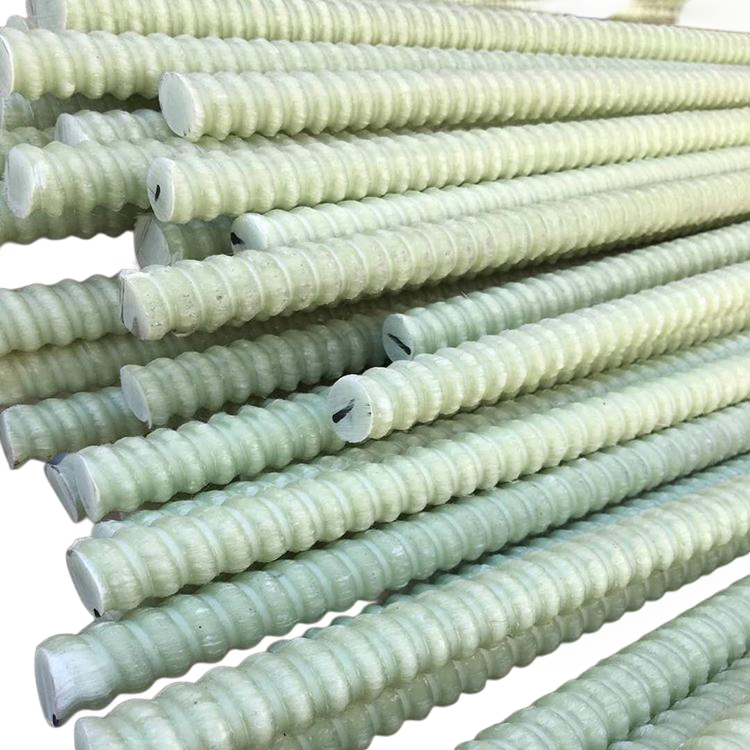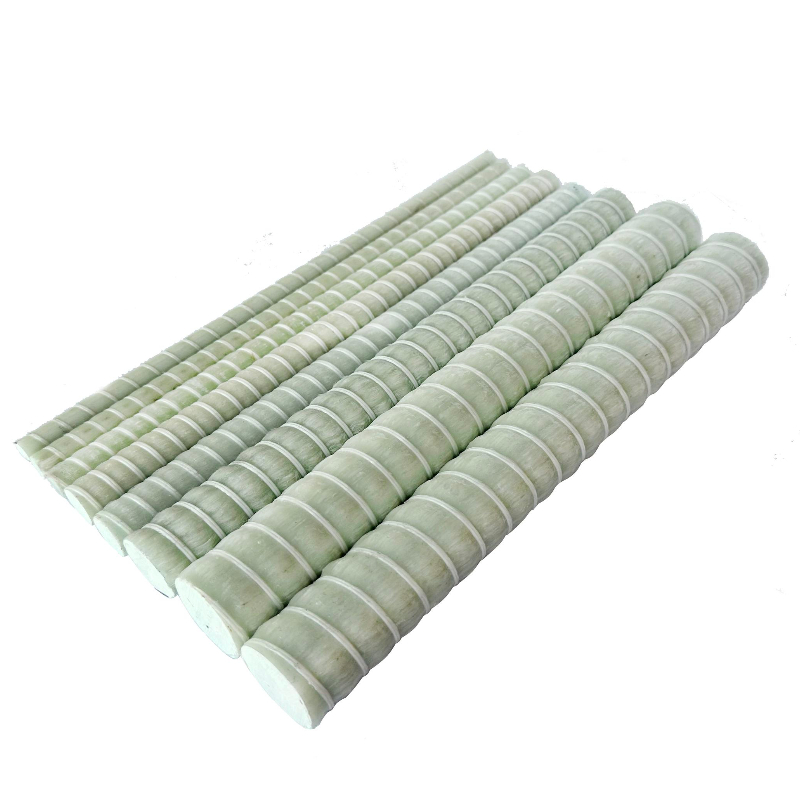Introduction
The construction industry has witnessed significant advancements in materials and technologies over the past few decades. Among these innovations, the development of high-strength rebar has been a game-changer. High-strength rebar, particularly in the form of glass fiber-reinforced polymer (GFRP), has emerged as a superior alternative to traditional steel reinforcement due to its remarkable mechanical properties and resistance to corrosion. This article delves into the properties, applications, and benefits of high-strength rebar, providing a comprehensive understanding of its role in modern construction.
Mechanical Properties of High-Strength Rebar
High-strength rebar, especially GFRP rebar, exhibits exceptional mechanical properties that make it suitable for a wide range of structural applications. The tensile strength of GFRP rebar can reach up to 1,000 MPa, significantly surpassing that of conventional steel rebar. This high tensile strength allows for the design of structures that are both robust and lightweight. Additionally, the modulus of elasticity of GFRP rebar is lower than that of steel, which can be advantageous in applications where flexibility is desired.
Corrosion Resistance
One of the most significant advantages of high-strength rebar is its excellent resistance to corrosion. Unlike steel, GFRP rebar does not rust when exposed to moisture, chemicals, or saline environments. This property extends the lifespan of structures, reduces maintenance costs, and enhances safety. For instance, bridges and marine structures greatly benefit from using GFRP rebar due to their constant exposure to corrosive environments.
Lightweight Characteristics
High-strength rebar is substantially lighter than steel rebar, weighing approximately one-fourth as much. This reduction in weight simplifies handling and transportation, leading to cost savings and increased efficiency on construction sites. The lightweight nature of GFRP rebar also reduces the overall dead load of structures, which can be particularly beneficial in seismic regions where lower mass translates to reduced seismic forces.
Applications in Infrastructure
The superior properties of high-strength rebar have led to its adoption in various infrastructure projects. In highway construction, GFRP rebar is used to reinforce concrete pavements, barriers, and retaining walls, enhancing durability and reducing life-cycle costs. In bridge construction, the use of high-strength rebar mitigates corrosion-related issues, leading to longer-lasting structures with lower maintenance requirements.
Marine and Coastal Structures
Marine environments are highly corrosive due to the presence of saltwater and chlorides, which accelerate the deterioration of steel reinforcement. High-strength rebar made of GFRP is an ideal solution for piers, ports, and offshore platforms. Its corrosion resistance ensures structural integrity over extended periods, even under constant exposure to harsh conditions.
Tunneling and Mining
In tunneling and mining applications, high-strength rebar is used for rock bolting and ground support systems. The use of high-strength rebar enhances safety by providing reliable reinforcement in unstable ground conditions. Its non-conductive nature also makes it suitable for environments where electrical conductivity could pose a hazard.
Advantages over Traditional Steel Rebar
High-strength rebar offers several advantages over traditional steel rebar. These benefits are not only limited to mechanical properties but also extend to economic and environmental aspects.
Longevity and Durability
The inability of GFRP rebar to corrode leads to longer service life of structures. This longevity reduces the frequency of repairs and replacements, resulting in substantial cost savings over time. Studies have shown that structures reinforced with GFRP rebar can have a lifespan exceeding 100 years with minimal maintenance.
Electrical and Magnetic Neutrality
High-strength rebar made from GFRP is non-conductive and non-magnetic. This property is crucial in facilities that are sensitive to electromagnetic fields, such as hospitals, laboratories, and power plants. Using GFRP rebar eliminates interference with electronic devices and equipment, ensuring operational integrity.
Thermal Compatibility
GFRP rebar exhibits a coefficient of thermal expansion similar to that of concrete. This compatibility reduces internal stresses caused by temperature changes, minimizing the risk of cracking and extending the durability of the concrete structure.
Design Considerations
While high-strength rebar offers numerous benefits, certain design considerations must be taken into account. The lower modulus of elasticity compared to steel requires careful structural design to control deflections and crack widths. Engineers must also consider shear strength and bond characteristics unique to GFRP rebar.
Codes and Standards
The increasing use of high-strength rebar has led to the development of design codes and standards. Guidelines such as the American Concrete Institute's ACI 440 provide design provisions for GFRP-reinforced concrete structures. Adhering to these standards ensures safety and reliability in structural designs.
Connection and Anchorage
Proper anchorage of high-strength rebar is critical for structural performance. Due to the smooth surface of GFRP rebar, surface treatments or special connectors may be necessary to achieve adequate bond strength with concrete. Innovative products like GFRP insulation connectors have been developed to address these challenges.
Economic Implications
The initial cost of high-strength rebar can be higher than that of traditional steel rebar. However, when considering the total life-cycle cost, high-strength rebar often proves to be more economical. The savings from reduced maintenance, longer service life, and avoidance of corrosion-related damages offset the higher upfront investment.
Life-Cycle Cost Analysis
Life-cycle cost analysis demonstrates the economic benefits of using high-strength rebar. For example, in bridge construction, the use of GFRP rebar can lead to savings of up to 25% over a 75-year period compared to steel-reinforced structures. These savings stem from decreased maintenance and extended service intervals.
Funding and Investment
Infrastructure projects utilizing high-strength rebar may attract funding due to their sustainability and longevity. Governments and private investors are increasingly recognizing the value of durable construction materials, leading to financial incentives for projects that incorporate advanced materials like GFRP rebar.
Case Studies
Numerous projects worldwide have successfully implemented high-strength rebar. The following case studies illustrate the practical benefits and performance of GFRP rebar in real-world applications.
Bridge Deck Rehabilitation
In Canada, the Jamestown Bridge underwent deck rehabilitation using GFRP rebar. The project demonstrated improved durability and reduced maintenance needs. The high-strength rebar effectively resisted corrosion from de-icing salts, ensuring the long-term performance of the bridge deck.
Marine Wharf Construction
A marine wharf in Australia incorporated high-strength GFRP rebar to combat the aggressive saltwater environment. The use of GFRP rebar extended the service life of the wharf and reduced the frequency of repairs typically associated with steel reinforcement in such settings.
Environmental Benefits
High-strength rebar contributes to environmental sustainability in construction. Its corrosion resistance reduces the need for additional protective coatings or cathodic protection systems, thereby minimizing the use of hazardous materials. Additionally, the longevity of GFRP-reinforced structures reduces resource consumption over time.
Reduced Carbon Footprint
The production of GFRP rebar generally requires less energy compared to steel production. Moreover, the extended lifespan of structures reduces the frequency of reconstruction, leading to lower cumulative emissions associated with material production and construction activities.
Resource Efficiency
Using high-strength rebar can lead to material savings due to its superior strength-to-weight ratio. This efficiency reduces the quantity of raw materials needed for construction projects, contributing to more sustainable resource management.
Challenges and Solutions
Despite the advantages, the adoption of high-strength rebar faces challenges such as higher initial costs, lack of familiarity among engineers, and limited availability. Addressing these challenges is essential for broader acceptance and utilization.
Education and Training
Increasing awareness and understanding of high-strength rebar among engineers and construction professionals is crucial. Educational programs and workshops can disseminate knowledge about design considerations, handling procedures, and long-term benefits.
Standardization and Certification
Developing standardized testing methods and certification processes ensures the reliability of high-strength rebar products. Standardization facilitates regulatory approval and integration into building codes, promoting confidence among stakeholders.
Future Perspectives
The future of high-strength rebar looks promising, with ongoing research and development focused on enhancing its properties and reducing costs. Innovations in manufacturing processes and material science are expected to further improve performance and affordability.
Hybrid Reinforcement Systems
The integration of high-strength rebar with other advanced materials could lead to hybrid reinforcement systems that capitalize on the strengths of multiple materials. Such systems may offer optimized performance for specific applications, further expanding the utility of high-strength rebar.
Nanotechnology Enhancements
Incorporating nanomaterials into the manufacturing of high-strength rebar could enhance mechanical properties and durability. Nanotechnology has the potential to improve interfacial bonding, increase strength, and introduce self-sensing capabilities for structural health monitoring.
Conclusion
High-strength rebar represents a significant advancement in construction materials, offering superior mechanical properties, durability, and environmental benefits over traditional steel reinforcement. Its application in various sectors, including infrastructure, marine, and underground construction, highlights its versatility and effectiveness. Despite challenges in adoption, the long-term advantages of high-strength rebar, such as reduced maintenance costs and extended structural lifespan, make it a compelling choice for modern engineering projects. As technology progresses and familiarity grows, high-strength rebar is poised to become a standard in reinforcing solutions, driving the industry toward safer, more sustainable, and economically viable construction practices.
For more information on the applications and benefits of high-strength rebar, consider exploring resources on high-strength rebar to deepen your understanding of this innovative material.




























